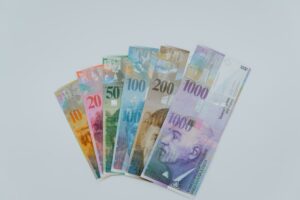Understanding the Different Forex Sessions and Their Significance
Forex trading is a global market that operates 24 hours a day, five days a week. This means that traders from all around the world can participate in the market at any given time. However, the forex market is not active at the same level throughout the entire day. It is divided into different sessions, each with its own characteristics and significance. In this article, we will explore the different forex sessions and understand their importance for traders.
1. Asian Session:
The Asian session, also known as the Tokyo session, starts at 12:00 AM GMT and ends at 9:00 AM GMT. It is the first major session of the day and is characterized by low volatility and liquidity. This is because most of the major financial centers, such as London and New York, are closed during this time. The Asian session is dominated by Japan, China, Australia, and New Zealand. Traders during this session focus on currency pairs involving the Japanese yen, such as USD/JPY or EUR/JPY.
2. European Session:
The European session, also known as the London session, is the most active session of the day. It starts at 8:00 AM GMT and overlaps with the Asian session for a few hours. The European session is dominated by London, which is considered the financial capital of the world. During this session, there is an increase in liquidity and volatility, leading to more trading opportunities. Traders focus on currency pairs involving the euro, such as EUR/USD or EUR/GBP.
3. North American Session:
The North American session, also known as the New York session, starts at 1:00 PM GMT and overlaps with the European session for a few hours. This session is dominated by New York, which is another major financial center. The North American session is known for high liquidity and volatility, as it overlaps with both the Asian and European sessions. Traders focus on currency pairs involving the US dollar, such as USD/CAD or USD/CHF.
Each forex session has its own significance and characteristics, and understanding them can help traders make better trading decisions. Here are some key points to consider:
1. Volatility: Different sessions have different levels of volatility. The Asian session is generally less volatile, while the European and North American sessions are more volatile. Higher volatility can lead to more trading opportunities, but it also carries higher risks.
2. Liquidity: Liquidity refers to the ease with which a trader can buy or sell a currency pair without causing significant price movements. The European and North American sessions have higher liquidity due to the participation of major financial centers. Higher liquidity ensures that traders can enter and exit positions quickly and at the desired price.
3. Trading Strategies: Different sessions require different trading strategies. For example, during the Asian session, traders may focus on longer-term trends and carry trades, while during the European and North American sessions, they may look for short-term breakout or momentum trading opportunities.
4. Economic News: Economic news releases can significantly impact currency prices. Traders should be aware of the economic calendar and the timing of important news releases during each session. For example, during the European session, there may be important economic data releases from the Eurozone, which can influence the euro.
In conclusion, understanding the different forex sessions and their significance is crucial for traders. Each session has its own characteristics in terms of volatility, liquidity, and trading opportunities. By aligning their trading strategies with the relevant session, traders can increase their chances of success in the forex market. It is important to stay updated with economic news releases and adapt trading strategies accordingly.





